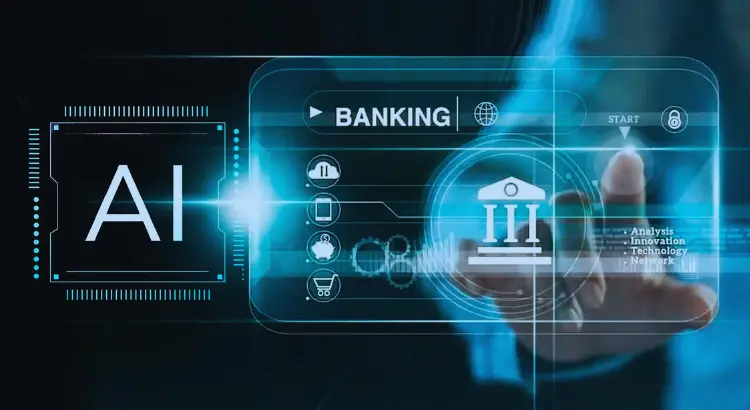Banking has been a practice since 2000 B.C. when merchants gave loans to farmers so they could purchase their goods. Bankers in ancient Greece and Rome worked from temples, keeping currency safe and lending it out to qualified patrons.
The oldest “modern” bank still in existence is Banca Monte dei Paschi di Siena, in Italy, which has been operating continuously since 1472. Waves of innovation have passed through the banking system in the last 4,000 years, including the introduction of money, lending, national currencies, the Federal Reserve, regulation, and federal deposit insurance.
The most recent major innovation in banking came with the digital revolution and the growing use of smartphones and online transactions. Today digital banking is being transformed by its own revolution, driven by artificial intelligence or AI. AI is the emerging technology that enables computers to not only process enormous amounts of data nearly instantaneously but also to learn from its experiences, without direct human coding.
The banking sector has faced challenging times in recent years, with increased oversight, mounting customer expectations, and new types of competitors – all while weathering historic rate volatility.
Artificial intelligence in finance looks likely to be the new differentiator in the competitive landscape and a critical component of future success. Progressive banks have already begun to embrace this innovation and adopt new AI-based products such as customer service chatbots and AI lending platforms.
Examples of Banks Integrating AI in Their Operations
Artificial Intelligence (AI) technology is emerging at an unprecedented rate as a powerful tool for improving efficiency, enhancing risk management, revolutionizing the client experience, and supporting business growth.
While digital banking enables banks to serve their customers more conveniently, AI-based products take it further, using data and insights to deliver highly personalized service.
For example, AI can learn what time of the month a customer always calls to check on a payroll deposit and send a proactive, automated email. It can note the product pages a customer visits and combine this with other information about the customer’s account to deliver personalized recommendations and advice.

The use of natural language processing (NLP) by computers is making non-human customer service more responsive. Natural language conversational interfaces make it easier for customers to get across their needs and questions. This is particularly important in financial services because talking about money can be stressful enough without communication problems.
Consumer internet companies like Netflix and Amazon have raised the public’s expectations for personalized service. Now, as banks compete fiercely for future deposits, great customer experience is no longer a nice to have. Banks who don’t focus on it may see their customers leaving for different providers.
A McKinsey survey of US retail banking customers found that deposits grew 84 percent faster at the banks with the highest degree of reported customer satisfaction than at the banks with the lowest satisfaction ratings.
So, to remain competitive, banks will need to adopt machine learning and deep learning, integrating the full capabilities of AI data processing, insight generation, decision-making, consumer engagement, and automation. Non-traditional challengers in the financial services field are already launching disruptive AI-powered innovations, but so are major traditional banks.
Banks like JP Morgan Chase, Citibank, Wells Fargo, Capital One, and more are increasingly leveraging AI for purposes such as data analysis, fraud detection, document digitization, facial recognition, app failure diagnosis, risk management, and VCN (virtual card number) experience.
Benefits of Banks Leaning into Innovation and AI

Major banks are investing in AI because of the significant benefits it offers.
- Enhanced customer experience and satisfaction. With its personalized recommendations and advice, aided by natural language processing, AI helps banks attract customers and keep them engaged and satisfied. AI lending can also help banks broaden their customer base. The more complete view of an individual’s financial patterns, responsibility level, and potential risks provided by AI’s massive data analysis capabilities can help banks approve qualified applicants who might be denied by traditional credit scoring.
- Improved operational efficiency and cost savings. Automating more processes effectively, with less human intervention, can make it easier and less costly to run the day-to-day operations of any kind of business, and banking – with its complex and critical operations – is no exception. AI is the natural next development of the digital revolution and its applications are revolutionizing the back office.
- Better risk management and fraud prevention. AI systems use advanced algorithms to quickly sift through massive amounts of data and find patterns. They can accurately identify financial risks and potentially fraudulent data that break these patterns. AI can recognize known threats coded into it, like pre-AI fraud prevention software, but goes further. It calibrates its rules as it learns from experience, so it is designed to also stop new as-yet-unidentified threats.
- Competitive advantage in the market. To thrive in the years ahead, banking executives need to adopt a strategic approach incorporating AI into core business models to deliver intelligent banking services.
In the face of greater regulatory oversight and surging consumer demand for innovative banking solutions, 2024 is projected to be the year many banks invest in the future of their business with more AI.
According to International Data Corp. (IDC), global AI spending is anticipated to be approximately $450 billion by 2027, with banking contributing around 13%. This investment could yield between $200 billion and $340 billion in value annually, representing a 9%- 15% increase in banks’ operating profits, according to a 2023 report by McKinsey & Co.
Conclusion
The bottom line is that banks must embrace AI to satisfy their customers and fuel growth. The integration of AI promises to offer an array of benefits, from simplifying data-intensive tasks to illuminating customer behavior, providing personalized services, improving lending decisions, and dramatically improving risk management.
The need for banks to innovate quickly, or partner with firms that offer cutting-edge solutions is very clear. AI is likely to become more of a necessity than an opportunity in the future. And the objective is clear: integrate AI to get, and stay, ahead, not merely to keep pace.